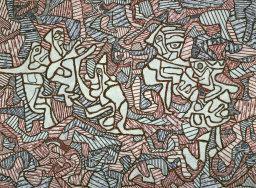Montessori education is dependent on experiential learning. Students don’t just learn concepts by repetition or book learning, they work with them. Use art and design to tie concepts together. As an example, assume the discussion of a Fibonacci sequence in math. In an integrated classroom children would draw it, identify it in nature and in famous paintings and sculpture. Students could draw it in pencil or by designing/utilising a simple computer program. Students could also explain or express it through a poem or an essay, art and design has the ability to express complex concepts in a visual manner.
A fundamental aspect of this is through literacy activities. Words are symbols that when combined, communicate a concept to the reader or the listener. Just like a Fibonacci sequence, words in their application are art and design. Not only in typography but in the message, feeling and logic they convey in their use and application.
Use art and design in conjunction with literacy activities to improve your child's vocabulary, phonics, sentence structure, grammar and comprehension. Additionally, they reinforce all other aspects of the National Curriculum. How? Here are two examples:
The Golden Ratio The Golden ratio is a math term, found in nature that describes a ratio, 1 to 1.618. Leonardo Da Vinci uses the Golden Ratio in the Mona Lisa. The painting of the Mona Lisa is also a story. What of? Children of all ages can craft one and their friends and classmates can read and discuss each other’s story. Has your child been to the Louvre to see the Mona Lisa? Encourage her to share this experience. Does she want to learn more on the subject? Take a trip to the library and encourage her to read about Leonardo and the painting. Good readers make for good writers and speakers.
Problem Solving

The Genuflection of the Bishop by Jean Dubuffet
Consider The Genuflection of the Bishop by Jean Dubuffet.It is a crazy, chaotic design of just about anything your imagination can conjure. It is mathematical in its geometry and almost fractal in its construct, it is quantum physics on canvas.Show children this piece and guide them through problem solving what this piece is all about and what it represents.Have them verbalise or write a poem or story, design a computer game, or discuss it mathematically.Art and design need not be a separate subject in your child’s curriculum. Use it in infinite ways to develop educational skills beyond the common curriculum. Encourage your children to pull disciplines together into a cohesive system of comprehension. After all, they do not exist by themselves, alone in a vacuum. Art and design can be the glue that holds the concepts together. By doing this, their skills, knowledge and comprehension will accelerate.
This post is brought to you in conjunction with Pencil Street.
Thank you so much for stopping by! If you enjoyed this post, please join us on Facebook,Twitter,Pinterest and G+. Click on the buttons on the right hand side to follow us on these platforms.
